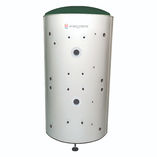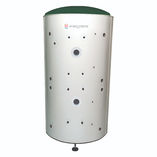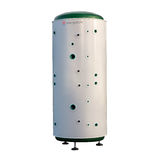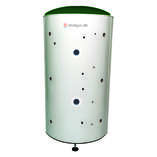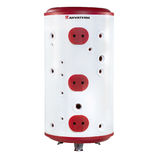Heat Pump information
A heat pump is way of providing renewable heating and hot water. They are powered by electricity and work in a similar way to a freezer or fridge. You know that the inside of your freezer is cold, but have you noticed that the back and/or sides get warm? Well that's the heat that it has taken away to make the inside cool.
Imagine you make a hole in the wall of your house the size of your freezer. Take the door off and have that facing out with the body of the fridge inside. The freezer will now be trying to cool down the outside world and as a result it will be warming up your house.
That's basically how heat pumps work.
What's so good about that?
Well you get more heat out than the electricity you put in. Heat pumps extract heat from the outside world. From the air in the case of an air source heat pump, from the ground in the case of a ground source and from water in the case of a water source heat pump - all of that is basically making use of solar heat. The electrical power it takes to run the pump is less than the heat you get out, typically you get 2.5 kWh or more of heat for every 1 kWh of electricity you put in. This ratio can rise depending on the type of heat pump, with water source potentially hitting ratios of 5 or more.
This ratio is known as the COP or Coefficient Of Production - and you will see heat pump manufacturers quote this figure in their specs. A ratio of 2.5 and above is typical for an air source heat pump.
Are heat pumps a form of renewable, low CO2, heating?
Yes, especially if your electricity supply is from a 100% renewable electricity supplier. Did you know that there are many suppliers now? Its really easy to switch, and doesn't even necessarily cost more than you are paying at the moment. You can compare the rates of many 100% green electricity suppliers by visiting: https://bigcleanswitch.org/
Heat pumps are also a great way to make use of your solar PV array - plug in a heat pump and you can store up all that heat in one of our thermal stores for use when you need it.
Are there any design considerations to bear in mind?
Yes. Heat pumps get less efficient (the COP goes down) the hotter the water it has to provide. That's why underfloor heating is a great combination for a heat pump because the temperature needed is low, typically around 40ºC, so at that temperature your heat pump should be running efficiently at a high COP.
You need some water at around 60ºC+ for showers and so on - and its important to not try to make the heat pump run at this temperature the whole time. We've designed our thermal stores specifically for use with multiple renewable types of heating. So our thermal stores partition off the hot water portion from the heating portion allowing you to ask the heat pump to heat only the top part to a high temperature, and the main body of water to a lower temperature.
The output of a heat pump will also tend to go down as the temperature of the medium it is extracting heat from reduces. This is especially the case for air-source heat pumps because outside air temperatures go a lot lower than those of the ground or water. So when designing the heating system the heat pump should be sized according to the likely minimum temperature. Some systems will incorporate an electric immersion element to topup the heat on the 3-5 very coldest days.
Can you run a heat pump with a biomass boiler or boiler stove?
Yes - we design systems like this all the time and we even have specialised thermal stores designed so that you get the best from each type of heating technology. We can also incorporate smart grid features so that you can store up more heat at those times when your variable tariff electricity is cheap.
However it is usually far simpler and cheaper to opt for a well designed heating system optimised for being run by a heat pump (which we can do for you), and then a normal stove for being cosy on cold nights.
Either way, as usual, we are happy to help. Do just get in touch.

